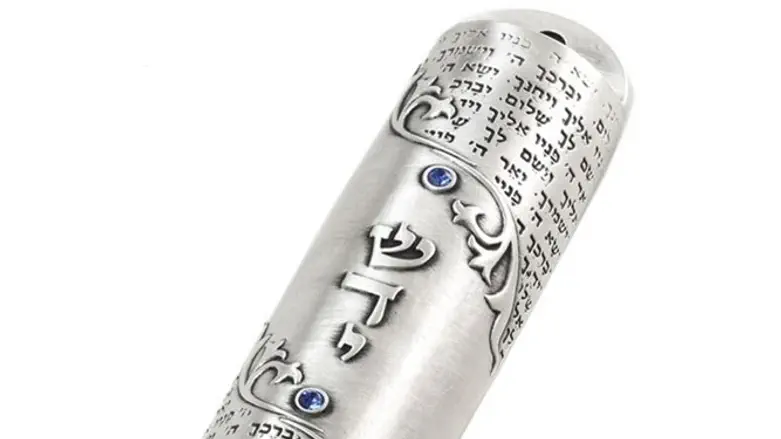
Large, small, plain, decorative… Ubiquitous across our global communities, the mezuzah is an iconic piece of Judaica that instantly identifies a home as Jewish. But what is the bizarre little box found on Jewish doors, and why is it there? Let’s investigate…
Who?
Who uses a mezuzah? The simple answer: all Jews, everywhere! The famous Hebrew prayer, the Shema, instructs the Jewish nation to love the Lord with all of their heart, soul, and might, and to inscribe His words upon their hearts and doorposts.
Deuteronomy 6:9 reads, “You shall write them upon the doorposts of your homes and upon your gates”; this lead to the Rabbinic command to affix a mezuzah to the entrance to every room in a Jewish home.
What?
So what exactly is a mezuzah? Simply put, it’s a small parchment scroll inscribed with specific verses from the Torah, which are written in ink by a highly trained scribe, also known as a sofer. The verses – what we know as the first and third paragraphs of the Shema prayer – include commands such as wearing tefillin and hanging mezuzahs, and talk about rewards such as rain falling in its season.
You’ll never find a kosher scroll stuck to a doorpost alone, though. Mezuzot are housed in decorative cases, ranging from simple plastic boxes embossed with the Hebrew letter shin to elaborate cases made from Jerusalem stone, silver, hand-carved wood, and other beautiful materials. There’s even an entire range of Chagall mezuzah cases!
This is done for two reasons: practically speaking, a scroll is very susceptible to damage. There’s also the notion of hiddur mitzvah – making our fulfillment of God’s commands as beautiful as possible, buy investing money in beautiful casing.
Where?
Where should one place a mezuzah? As mentioned above, there is a Rabbinic command to attach a mezuzah to every entryway in your home. This includes all doorways, arches, and gates except those leading to bathrooms and utility areas, and according to some, places where there are changes in the height of the ceiling. The mezuzah is placed on the right side of the doorway, on the upper third, and is generally fixed a slant.
It’s important to note that only permanent dwelling places require the placement of mezuzot: the sukkah doesn’t as it is intentionally temporary, and neither do cars. Similarly, if you stay in a hotel on vacation, you don’t need to stick a mezuzah up on your way in!
When?
The Rabbinic creed says that mezuzot must be affixed to the appropriate places within a month of taking up residency in a new home or opening a new business: many Jewish businesses mark their official opening with a mezuzah-hanging ceremony! A special blessing accompanies the placing of the mezuzah: Blessed are you… who commanded us 'likboa mezuzah' – to affix a mezuzah.
Why?
Why do we have mezuzot? For most Orthodox Jews, the simple fact that the Torah demands the placement of mezuzot is enough. However, it has become a somewhat superstitious practice: many believe that a kosher mezuzah at the entry to a home or room is amuletic and can guarantee the safety of those within.
Some even go so far as the believe that the mezuzah has the power to ward off the Evil Eye, and it is common to have one’s mezuzah scrolls checked following disaster – or to prevent it.